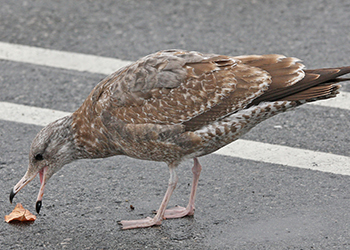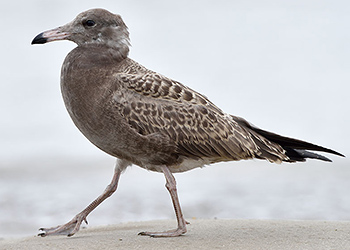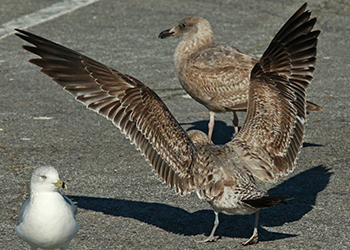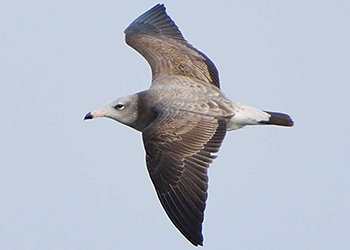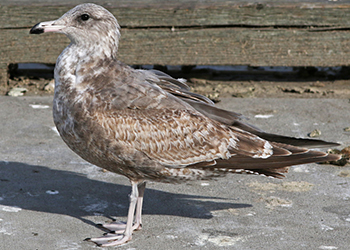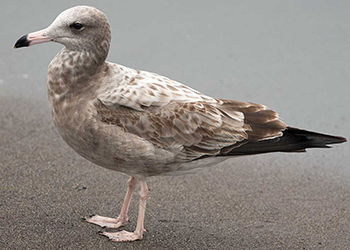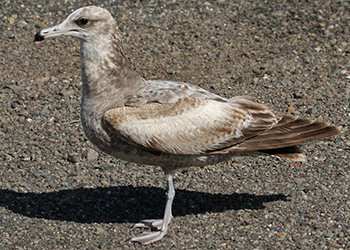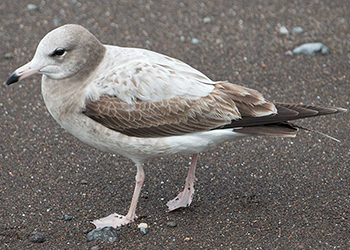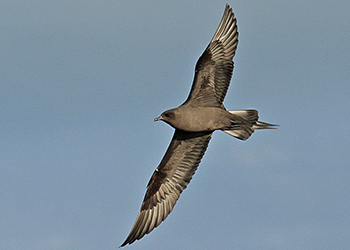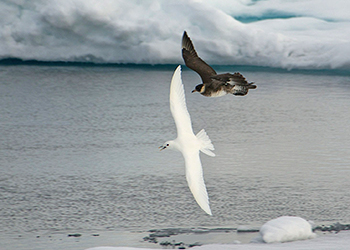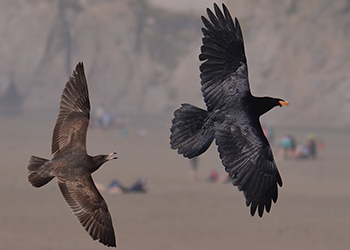|
||
Coordinators: 1cy June 2cy Jan 3cy Jan adult Jan |
adult: FebruaryBelow you will find a description of Chapter 16 HEERMANN'S GULL Larus heermanni, as published in one of the best Gull publication: "Gulls of the Americas" by Steve Howell & Jon Dunn. "we" in the text below refers to the original authors. If any errors occur in this text, please let me know and mail to marsmuusseatgmaildotcom. PART I: STATUS AND DISTRIBUTION FIELD IDENTIFICATIONSIMILAR SPECIES Uniformly dark plumage, black legs, and red to pinkish bill base diagnostic. First-cycle California Gull and Black-tailed Gull approach Heermanns in overall darkness and have pink, black-tipped bills - but both have pinkish legs, less solidly dark plumage overall with obvious white on tail coverts, bolder pale patterning on wing coverts, and variegated A1 scapulars. JAEGERS (genus Stercorarius) can be mistaken for Heermann’s Gull, and vice versa, especially because Heermann’s Gulls often chase and kleptoparasitize gulls and terns - but usually this confusion is short lived. Jaegers have white flashes at the base of the underside of their primaries (occasional adult Heermann’s have a white patch on the upperwing, but on the primary coverts), immatures often have distinct barring on their underwings, and most have elongated and projecting central rectrices. GRAY GULL (Pacific Coast of S. America) averages smaller and slimmer overall with more-slender black bill in all ages, adult is paler and more-uniform gray overall (upperparts paler); adult tail has variable gray basally and lacks bold white tip of adult Heermann’s. HABITAT AND BEHAVIOR Coastal. Sandy and rocky coasts, river mouths, coastal lagoons, fishing harbors. Rarely occurs more than a kilometer inland but ranges over inshore waters, mostly within 50 km of shore. Nests mainly on rocky islands and islets, locally in dense colonies. Nonbreeding birds often in flocks (locally up to a few thousand birds), associating readily with other gulls and water birds. Feeds commonly by scavenging (when often bold and aggressive for its size), also forages in intertidal and surface waters for marine invertebrates, and often seen in association with Brown Pelicans - which Heermann’s Gulls routinely kleptoparasitize. |
 Heermann's Gull heermannii adult, February 01 2017, Pismo Beach, California USA. Picture: Alex Abela. Heermann's Gull heermannii adult, February 01 2017, Pismo Beach, California USA. Picture: Alex Abela. |
 Heermann's Gull heermannii adult, February 10 2019, Pismo Beach, California USA. Picture: Alex Abela. Heermann's Gull heermannii adult, February 10 2019, Pismo Beach, California USA. Picture: Alex Abela. |
||
 Heermann's Gull heermannii adult, February 01 2017, Pismo Beach, California USA. Picture: Alex Abela. Heermann's Gull heermannii adult, February 01 2017, Pismo Beach, California USA. Picture: Alex Abela. |
||
 Heermann's Gull heermannii adult, February 01 2017, Pismo Beach, California USA. Picture: Alex Abela. Heermann's Gull heermannii adult, February 01 2017, Pismo Beach, California USA. Picture: Alex Abela. |
||
 Heermann's Gull heermannii
Heermann's Gull heermannii